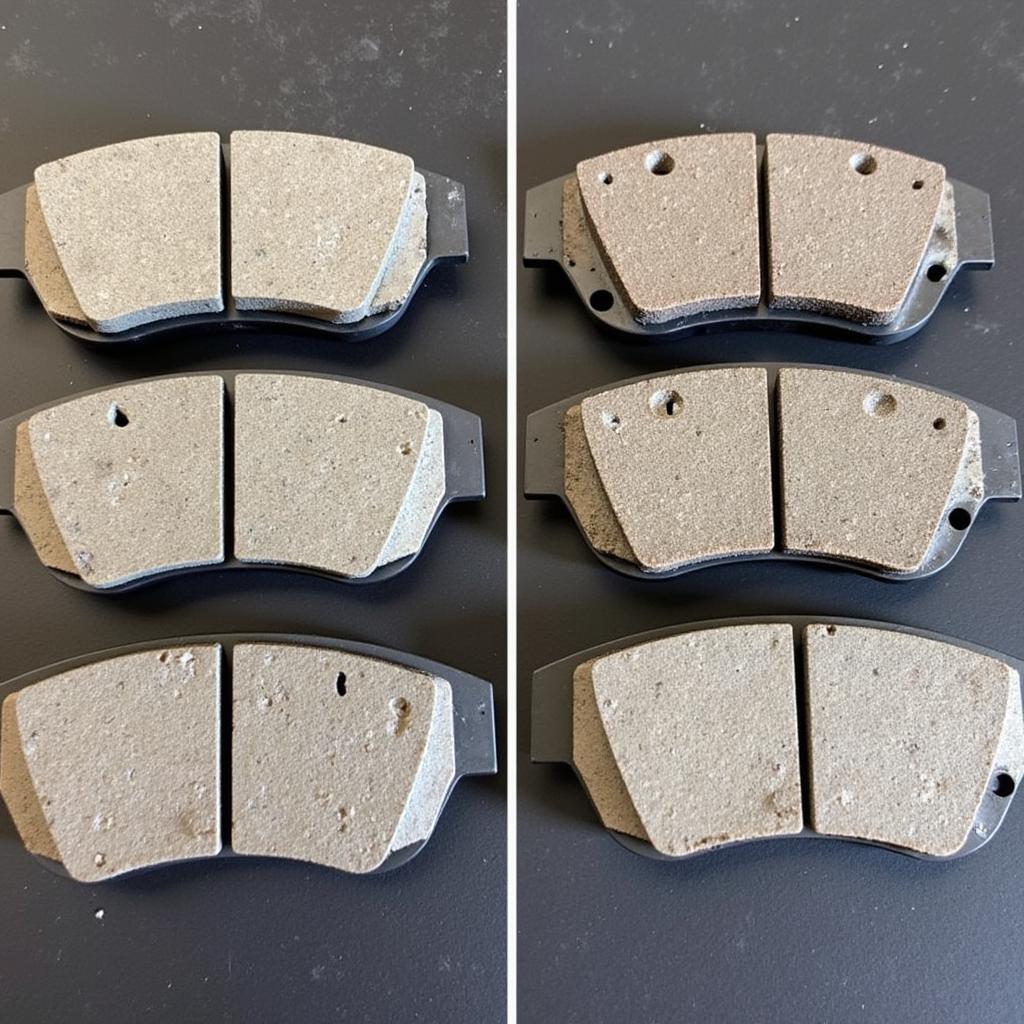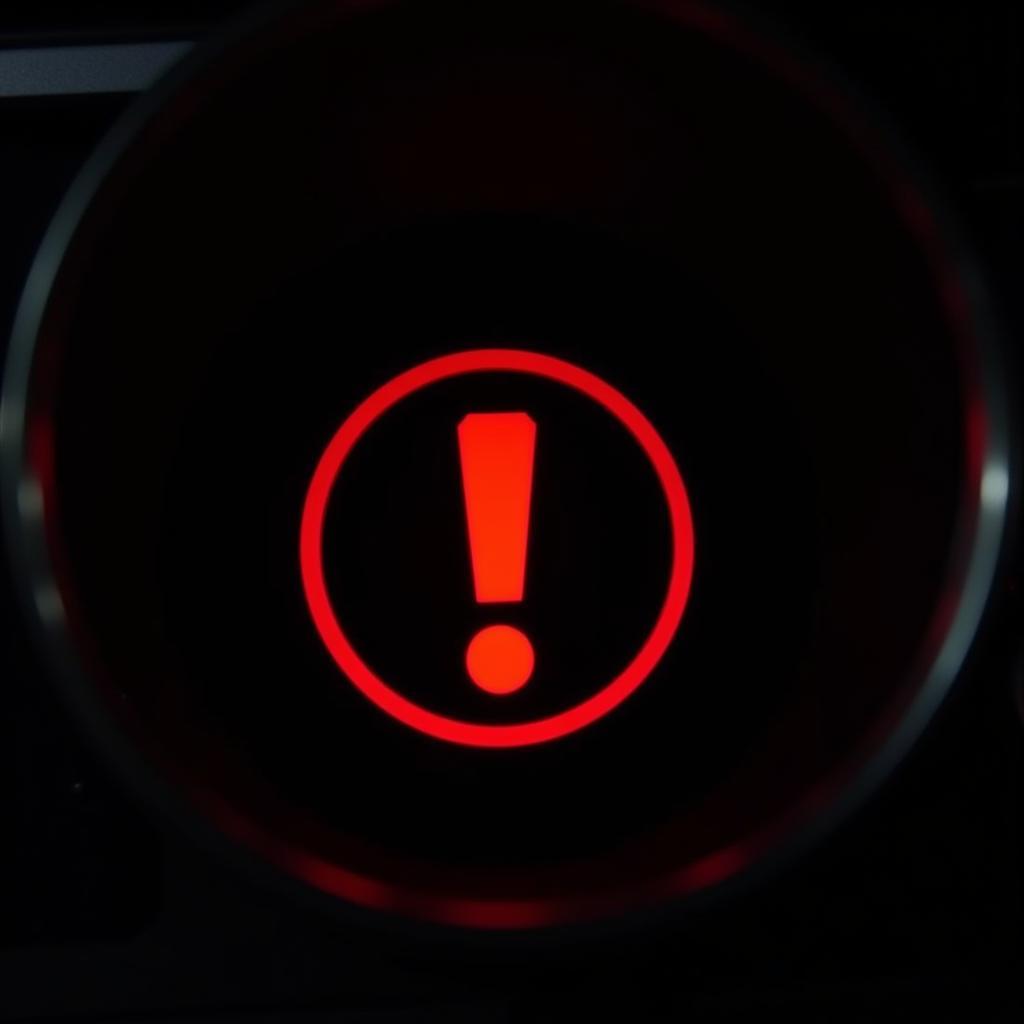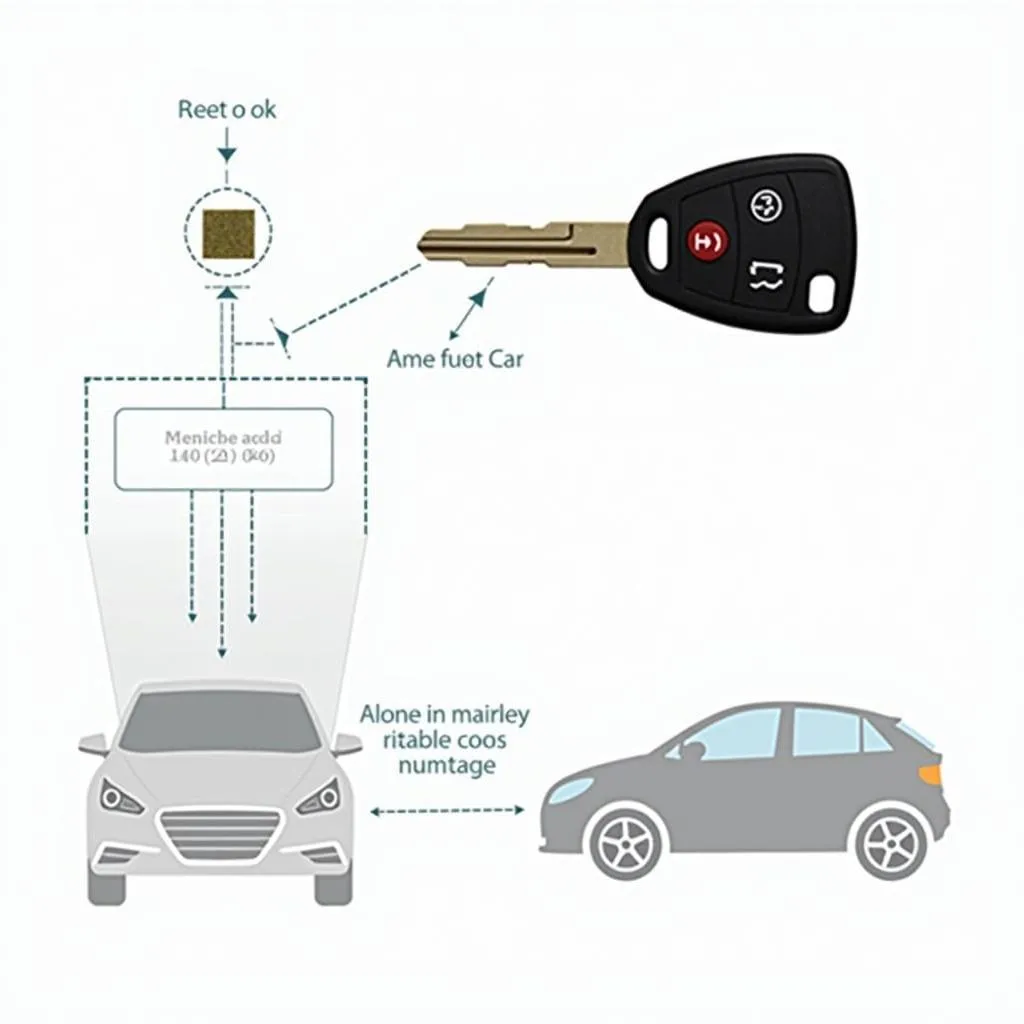The brake warning light on your dashboard is a crucial safety feature, especially on a 2010 Toyota Camry. When it illuminates, it signals a potential issue within your braking system that requires immediate attention. Ignoring this warning can lead to dangerous driving conditions and costly repairs. This comprehensive guide will delve into the common reasons behind a 2010 Toyota Camry brake warning light, troubleshooting tips, and potential solutions.
Understanding Your Camry’s Brake Warning System
Your Camry’s brake warning light is designed to activate in several situations, not all of which indicate a serious problem. Here’s a breakdown of common triggers:
- Parking Brake Engaged: This is the simplest explanation. If your parking brake is even slightly engaged, the warning light will stay on. Always double-check your parking brake before moving.
- Low Brake Fluid: Your Camry, like all vehicles, relies on brake fluid to transmit force when you press the brake pedal. A drop in brake fluid level, often due to leaks or worn brake pads, can trigger the warning light.
- Faulty Brake Light Switch: This switch, located behind your brake pedal, signals your brake lights to activate when you brake. A malfunctioning switch can disrupt this process and illuminate the warning light.
- Worn Brake Pads: Brake pads naturally wear down over time. Most modern vehicles, including your 2010 Camry, have wear indicators built into the brake pads. When the pads reach a certain level of wear, these indicators make contact with the brake rotor, triggering the warning light.
- ABS Issue: Your Camry has an Anti-lock Braking System (ABS) to prevent wheel lock-up during hard braking. If the ABS system detects a malfunction, it will activate the warning light.
Troubleshooting the Brake Warning Light
Before heading straight to a mechanic, there are a few simple checks you can perform:
- Check Your Parking Brake: Make sure it’s fully disengaged.
- Inspect Brake Fluid Level: Locate the brake fluid reservoir under the hood (refer to your owner’s manual for its exact location). If the fluid level is below the “MIN” mark, add the appropriate DOT 3 or DOT 4 brake fluid (check your owner’s manual for the recommended type).
- Examine Brake Pads: If you’re comfortable with basic car maintenance, you can visually inspect your brake pads. Look through the spaces between the wheel spokes. If the pad material is less than ¼ inch thick, it’s likely time for a replacement.
 Checking Brake Fluid Level
Checking Brake Fluid Level
When to Consult a Professional
If the warning light persists after these checks, or if you’re uncomfortable performing them yourself, it’s time to consult a qualified mechanic.
Here are some situations where professional help is essential:
- The brake warning light stays on even after adding brake fluid: This could indicate a leak in the brake lines, which needs immediate attention.
- You feel vibrations or hear grinding noises when braking: This often points to severely worn brake pads or a problem with the rotors.
- Your brake pedal feels spongy or goes too low to the floor: This could be a sign of air in the brake lines, a serious issue requiring professional bleeding.
- The ABS warning light is also illuminated: This indicates a problem with your anti-lock braking system, which requires specialized diagnostic equipment.
 Worn Brake Pads on a Toyota Camry
Worn Brake Pads on a Toyota Camry
“Ignoring a brake warning light is like ignoring a flashing ‘check engine’ light on an airplane,” says John Smith, a senior automotive technician with over 20 years of experience. “It might seem like a minor inconvenience, but it could be a sign of a serious problem that needs immediate attention.”
The Importance of Regular Brake Maintenance
Just like any other part of your car, your braking system requires regular maintenance to function optimally. Here are some tips to keep your brakes in good condition:
- Follow the recommended brake fluid flush intervals: Refer to your owner’s manual for the recommended intervals, which are typically every 2-3 years.
- Have your brake pads and rotors inspected regularly: This is especially important if you frequently drive in heavy traffic or hilly areas.
- Don’t ride your brakes: Avoid braking harshly or unnecessarily, as this can lead to premature wear and tear.
Conclusion
A glowing brake warning light on your 2010 Toyota Camry should never be ignored. By understanding the common causes, performing basic troubleshooting, and seeking professional help when necessary, you can ensure the safety and longevity of your vehicle’s braking system. Remember, preventative maintenance is always better (and cheaper) than dealing with a major brake failure down the road.


